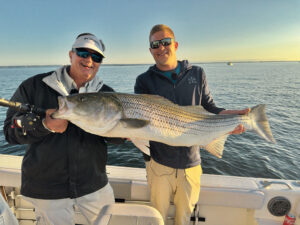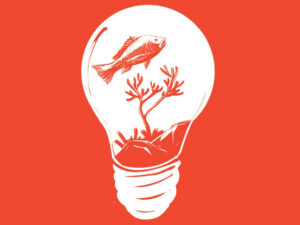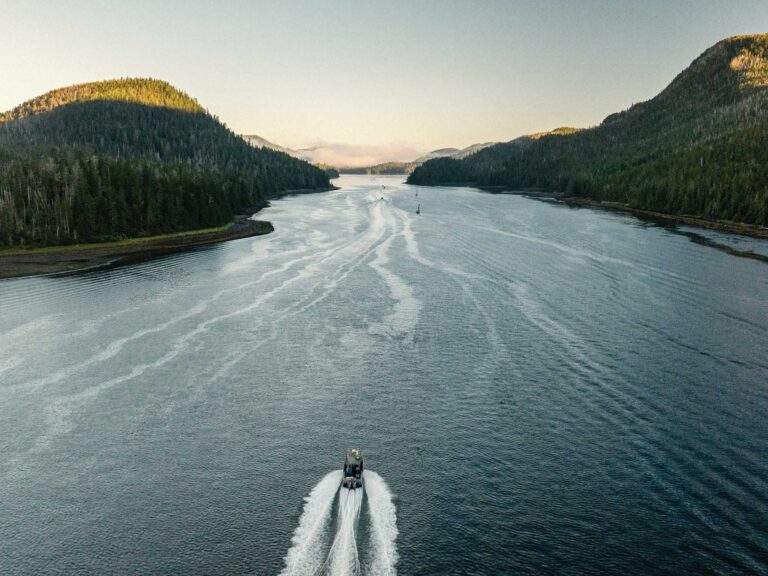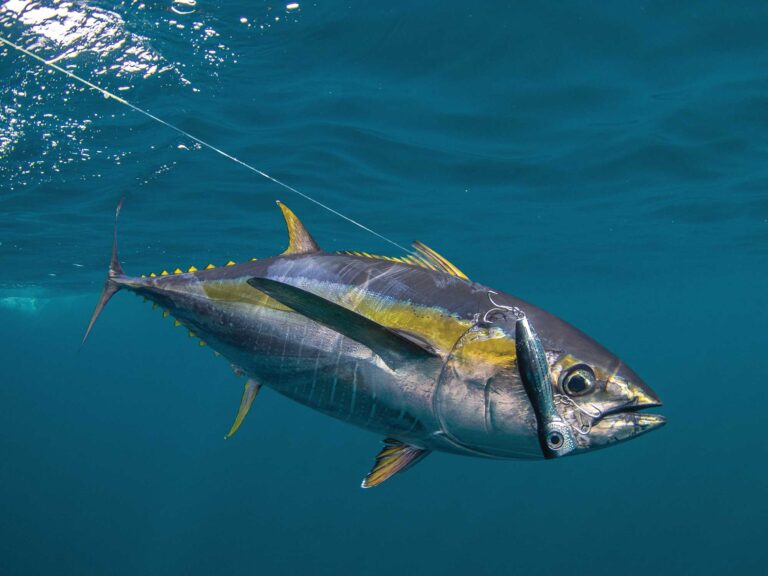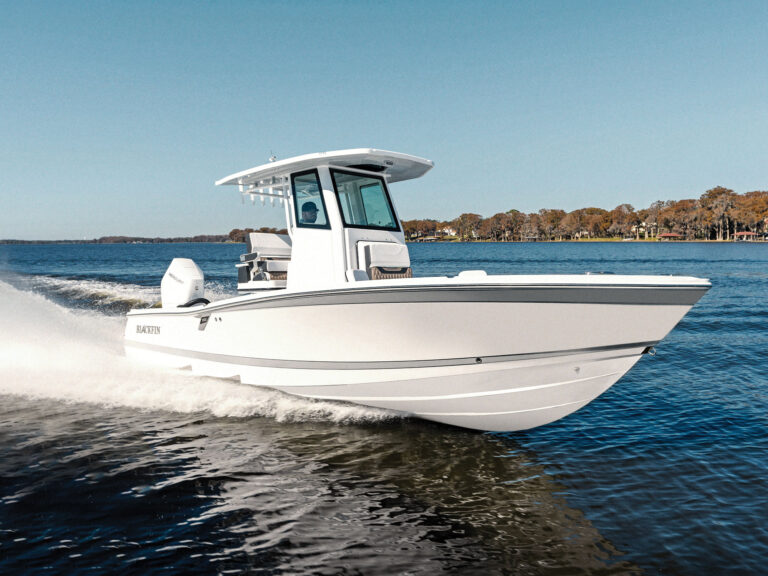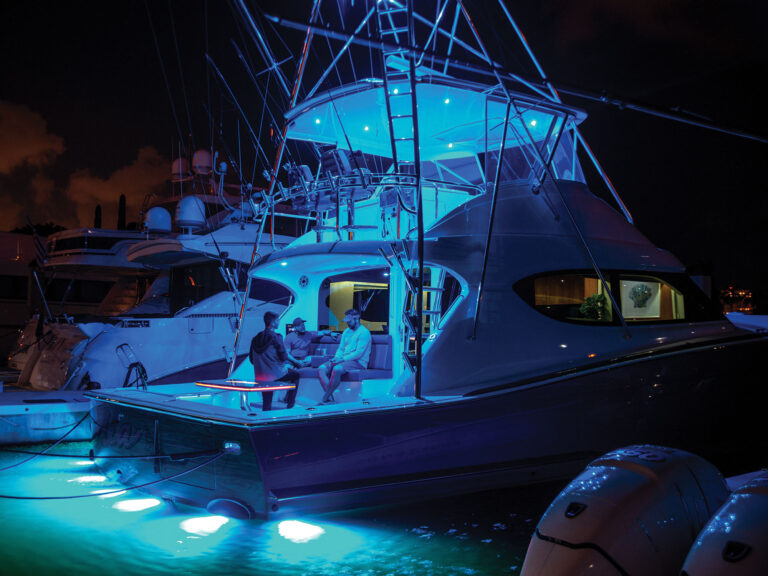
The connection between energy-extraction infrastructure and saltwater sport fishing is indisputable. For example, the thousands of oil and gas platforms in the Gulf form the foundation of a billion-plus-dollar recreational fishing industry.
Now, as the nation’s energy industry continues to evolve, fisheries scientists and anglers alike wonder if offshore wind infrastructure can do for other coastal fisheries what those oil and gas rigs did for anglers along the Gulf Coast. Or could that infrastructure have negative impacts on fish populations?
A small offshore wind development off Rhode Island’s Block Island has provided a glimpse at how those structures can attract fish and fishermen. Studies have shown an increase in fish populations around the structures, which also have attracted significant interest from recreational anglers. Now, a much larger development underway off Virginia’s coast will provide even more information.
Dominion Energy’s Coastal Virginia Offshore Wind (CVOW) project, located 27 miles off Virginia Beach, will feature 176 turbine structures and three substations over a lease area of a little more than 100,000 acres. About half of the support structures were installed in the summer of 2024. Although President Trump signed an executive order halting further permitting of offshore wind leases, the CVOW project will continue, with the balance of structures to be installed in 2025 and project completion in 2027.
Brendan Runde, a marine scientist with the Virginia chapter of The Nature Conservancy, is conducting research on how offshore wind infrastructure build-out may impact fish populations and the ecosystems that are important to fish.
“In anticipation of construction, TNC was able to acquire funding to put a fish-tagging project in the water around two test turbines that were installed in 2020,” Runde says. “We had the idea to put acoustic transmitting tags on fish around those two test turbines so we could study the movement and behavior of those animals during construction activity of the adjacent wind farm.”
Structures for the Virginia project are monopoles, approximately 30 feet in diameter, which are driven 80 to 150 feet deep into the seafloor. After the piling is driven into place, crews place rock or concrete rubble around the base to serve as scour protection.
Starting in the spring of 2024, Runde and his team made several trips to the test turbine structures, using conventional fishing tackle to collect fish for tagging. The structures, though just a few years old, already hold plenty of fish. Runde’s team tagged about 70 finfish, most of them black sea bass. They also tagged a few tautog as well as a handful of channeled whelk, a mollusk.
Each tagged animal carries a transmitter that sends a ping every couple of minutes. Those signals are picked up by receivers moored to the seafloor around the structures.
“When a ping is detected by three or more structures, that gives us the ability, with a high degree of resolution, to say, ‘OK, that fish is at coordinates XYZ,’” Runde says. “The tag has a pressure sensor in it, which gives us depth.”
Because the study started before crews began installing the monopoles in 2024, the data will include info on fish behavior prior to construction as well as once construction is underway.
“We know what they were doing prior to construction activity, and we know where and when each new turbine foundation was built,” Runde says. “So we can match up how the animals were behaving.”
Crews use a bubble screen to reduce the noise as they are driving the monopoles into the ocean floor, but the work still creates underwater disturbance. It takes about a day to install a single structure. Runde is in the process of analyzing millions of data points and hopes to complete that process by the end of 2025. While he isn’t able to give detailed results, he has some basic information, including that the fish on the structures are homebodies.
“Out of the fish we tagged, only one went from one structure to the other that’s a kilometer away,” Runde says. “They’re on that puppy and they stick around.”
Another thing Runde can say for certain is that adjacent construction did not lead to a “lethal response” of any tagged fish. Runde says his crew caught one fish that had been previously tagged, and recreational anglers also reported catching several tagged fish.
Runde also addressed concerns about impacts on other sensitive sea animals.
“There are prohibitions on construction activities, including seasonal prohibitions from November 1 through April 30 during the time of year when endangered North Atlantic right whales are most likely to be present in the area,” Runde says. He added that all vessels associated with offshore wind infrastructure construction must have protected species observers on board, and those observers have unilateral authority to halt construction activity if they see a protected species such as a whale or sea turtle in the area.
“There has been some misinformation in the media regarding the link between an unusual [whale] mortality event and offshore wind construction,” Runde says. “There is no scientific evidence to suggest that even a single marine mammal has been killed as a result of any offshore wind-related activity. Most of the animals that have been necropsied as a result of this event have borne signs of vessel strikes.”
Read Next: Should Old Oil Rigs Be Reefed?
In addition to the black sea bass and tautog included in the study, Runde encountered other species around the test turbines, including mahi and cobia. An avid recreational angler who grew up in coastal North Carolina, Runde says he expects CVOW to become an important part of the sport-fishing scene in the mid-Atlantic.
“There are not a lot of other big structures in the area, so these will be attractive for bottomfish like black sea bass and attractive for pelagic species like dolphin and king mackerel,” Runde says. “And amberjack are going to love these things. I think it’s going to be really cool to see how the fishery develops. I think it’s going to be a destination.”

